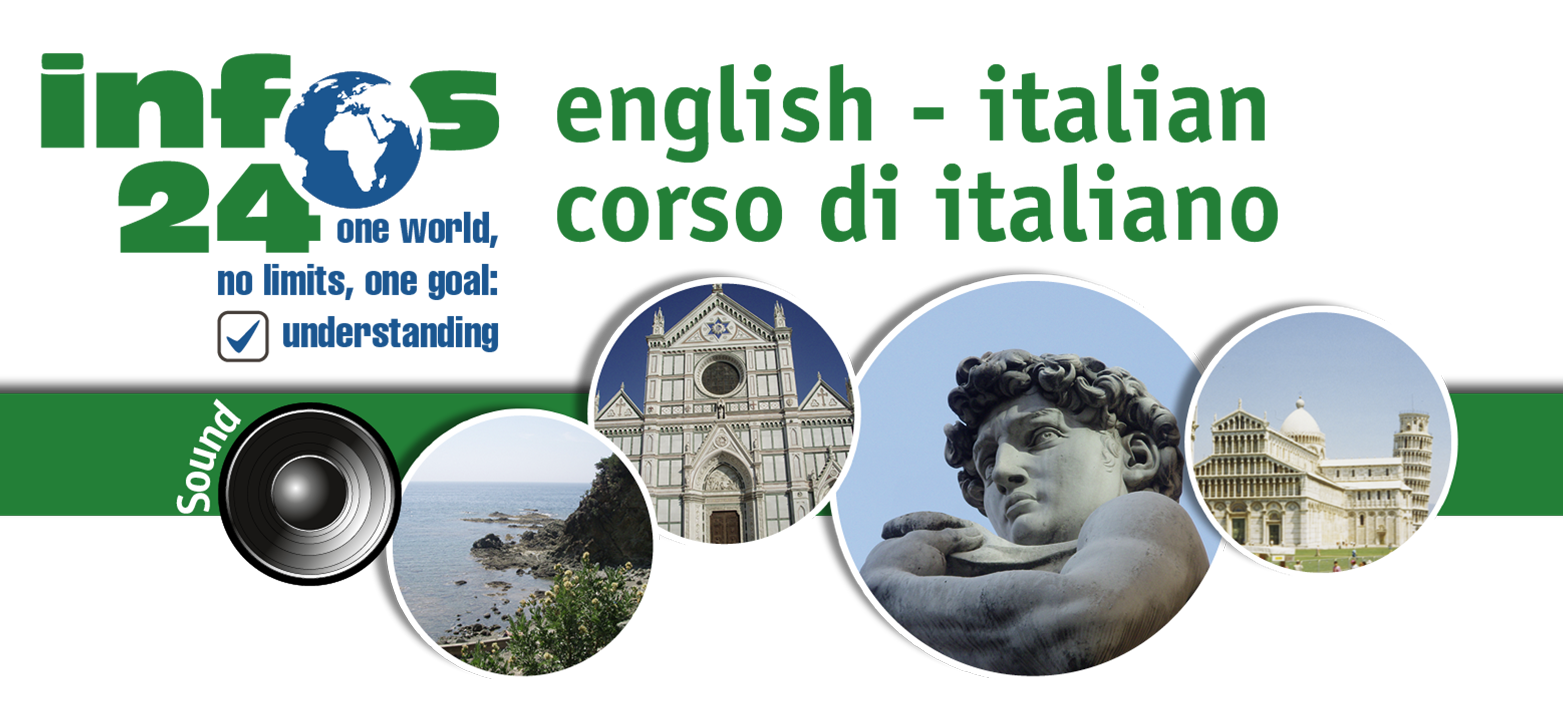
explanation vocabulary / grammar video show / hide
| 3.1.2.2 Other differences in the use of definite articles |
The most important difference in the use of definite articles between English and Italian is the fact that before a possessive pronoun there must be, in general, we already talked about the exception, a definite article. The other differences are less striking.
| In Italian there must be an article with time data | ||
| In Italian there must be an article in front of the daytime. (Obviously we are going to talk about the date, day time, etc. later in detail.) | ||
| Sono le sette. It is seven o' clock. (literal: Are the seven (hours)) |
||
In Italian in general there is a definite article in front of countries, islands, continents, regions |
||
| La Francia è un bel paese. France is a nice country. |
||
| L' Italia è famosa per i suoi pittori. Italy is famous for its painters. |
||
| La Toscana si trova in Italia. Tuscany is in Italy. |
||
| but if there is a preposition it' s without article! | ||
| Molti turisti vanno in Italia ogni anno. Many tourists go to Italy each ear. |
||
| In general a definite article is used in Italian if there is no article at all in English | ||
| I tedeschi bevono molta birra. Germans drink a lot of beer. |
||
| In Italian you use an article in front of languages | ||
| L' Italiano è una lingua più melodica che il tedesco. Italian is a more melodic language than german. |
||
| In Italian an article is used before abstract notions | ||
| L' economia è una scienza non abbastanza riconosciuta. Economy is a science not estimated enough. |
||
| La giustizia esiste soltanto per coloro che hanno i soldi. Justice only exists for those who have the money. |
||
| In Italian an article is used before an illness | ||
| Luigi ha la febbre. Luigi has fever. |
||
| In some cases there is no article neither in Italian nor in English | ||
| after some idiomatic expressions | ||
| Vado a scuola. I go to school. |
||
| Andiamo a teatro. We go to the theater. |
||
| contact privacy statement imprint |